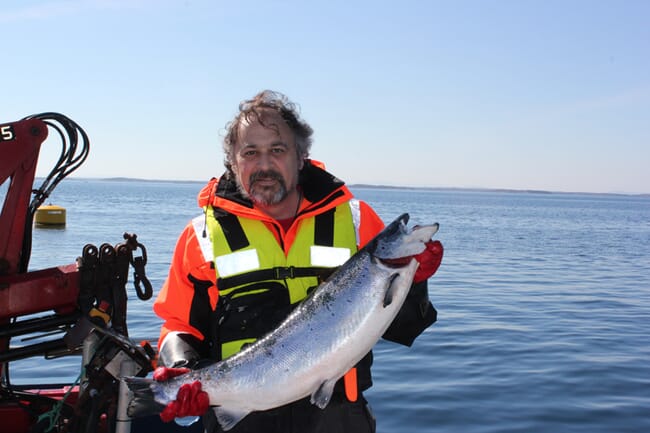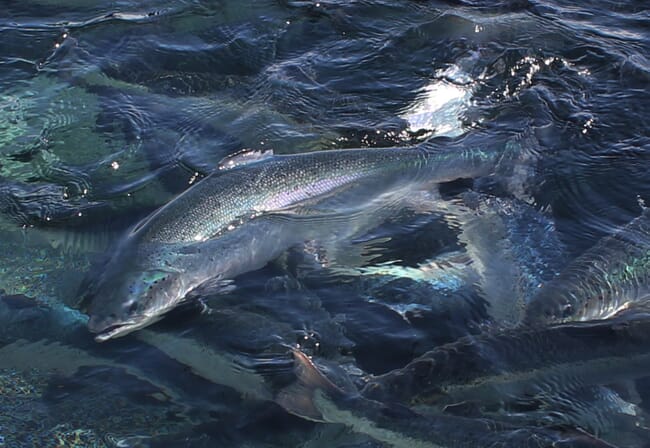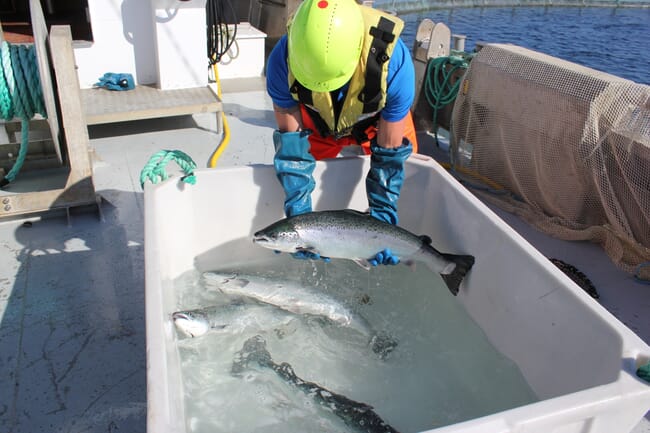
© Juan E Trigo
So claims Juan E Trigo, who has been investigating the potential of a variety of filter-feeding invertebrates to reduce the number of larval sea lice in aquaculture systems.
He recently published the results of a new study on this subject in the Journal of Aquaculture Development. While the results presented in the paper are compelling – with filter-feeders ingesting between 30 and 72 percent of the available copepods in tanks after only four hours – he has not yet divulged the precise species of filter-feeders that he trialled, due to commercial sensitives.
However, if the results – which were obtained in laboratory conditions – can be replicated in commercial aquaculture net pens, Trigo and has fellow researcher Meritxell Mondéjar, claim that the method could reduce parasite numbers “without the use of chemicals, medicines or methods that can cause unnecessary stress to salmon on sea farms”.
Pilot project
Trigo explained to The Fish Site the reason why he was currently unwilling to give more detail at the present time.
“There is a company in Norway that wants me to do the development of the pilot project and I cannot speak about it. I can only say that the expectations are enormous and that if we obtain good results in the real environment it could be an implantable method anywhere in the world and on any aquaculture species that can be attacked by parasitic copepods, whether fresh or salt water,” he said.
The work follows on from previous tests carried out with filter-feeding bivalves – mainly mussels, oysters and scallops. But, following tests on 16 species, the researchers believe that different phyla would be better suited to the role and narrowed their trials down to three of the original 16.
“But in this case it is intended to go much further, using invertebrates belonging to different marine invertebrate phyla, with high filtration and digestion capacities and roundly rejecting mussels and oysters,” the authors explain in the paper.

© Juan E Trigo
Although he does not name the species, he does suggest that they might be edible, or that there is at least a potential market for them.
“Some of the species we trialled are edible and highly appreciated… the non-edible ones can be used to obtain very interesting by-products such as astaxanthins, chitosans and others of great added value,” he explained to The Fish Site.
“Multitrophic aquaculture increases profitability and reduces risks through crop diversification and alternative sources of income,” he wrote.
Patent pending
With a patent pending, Trigo also remains tight-lipped about the precise details of the devices that will house the mystery invertebrates, although he does offer a brief outline in the paper.
“This device is a simple structure, easy to handle and without mechanical parts or components, [which] allows sea lice free life larval stages (Nauplius I and II) to enter inside, where the filter feeders are located, being ingested and with no possibility of escape.
“In addition to protecting them from salmon attack, [it] allows filter feeders to develop very quickly and easily. One of the most important characteristics of the device is that it allows the oxygenation of the water in which it is immersed, so it is not a problem to increase the bioload inside the cages. The only maintenance required for the device would be external cleaning which could be carried out with pressurized water. If the fouling is excessive, it can be removed for mechanical cleaning. With regard to filter feeders, once or twice a month they should be reviewed to eliminate possible casualties, specimens suspected of having some pathology or too large specimens and replace them with new ones,” he wrote.

© Juan E Trigo
And he offered The Fish Site an inkling of how the devices would be deployed.
“The idea is to place between five and six devices inside each salmon cage. Their design means that they are not a problem when it comes to performing daily maintenance tasks. They are easy to remove and put back in place with an auxiliary boat crane for maintenance tasks,” he explained.
The method does, Trigo believes, have marked advantages over the biological control that is currently most widely practised to combat sea lice in salmon farming – the use of cleaner fish such as lumpsuckers and wrasse.
“In the case of our method, the average calculation per invertebrate seed specimen can range from 0.005 to 0.25 euros per unit, almost 10 times less than the cleaner fish,” he notes.
While the efficacy of the idea in open net fish farms remains to be seen, if the filter feeders are able to ingest even a small proportion of the sea lice copepods - and thereby reduce the need for medication or mechanical treatments - then it is likely to prove popular with salmon producers.
“Although the method has been tested at laboratory level only, the data obtained suggest that the potential of the idea is impressive,” Trigo concludes.




